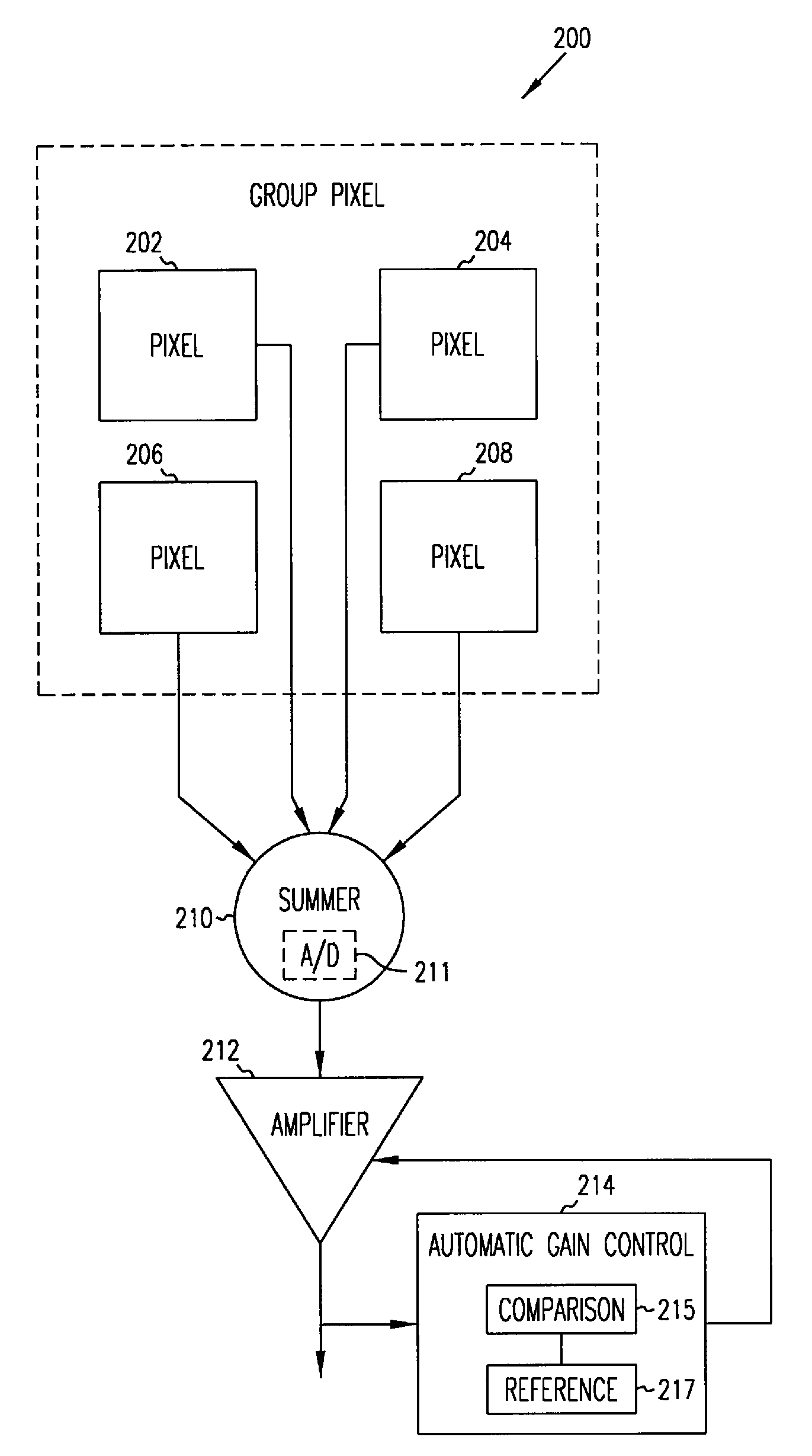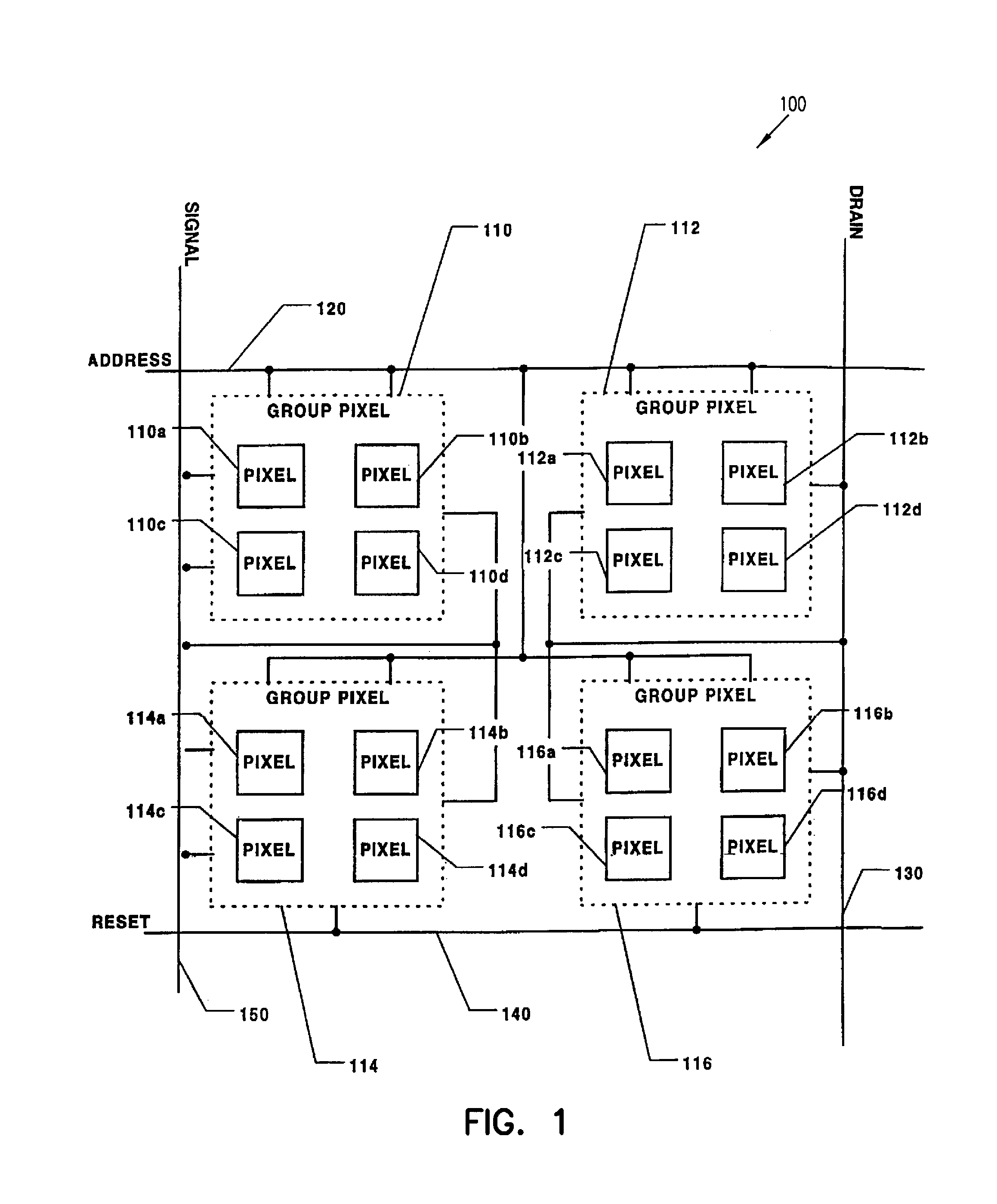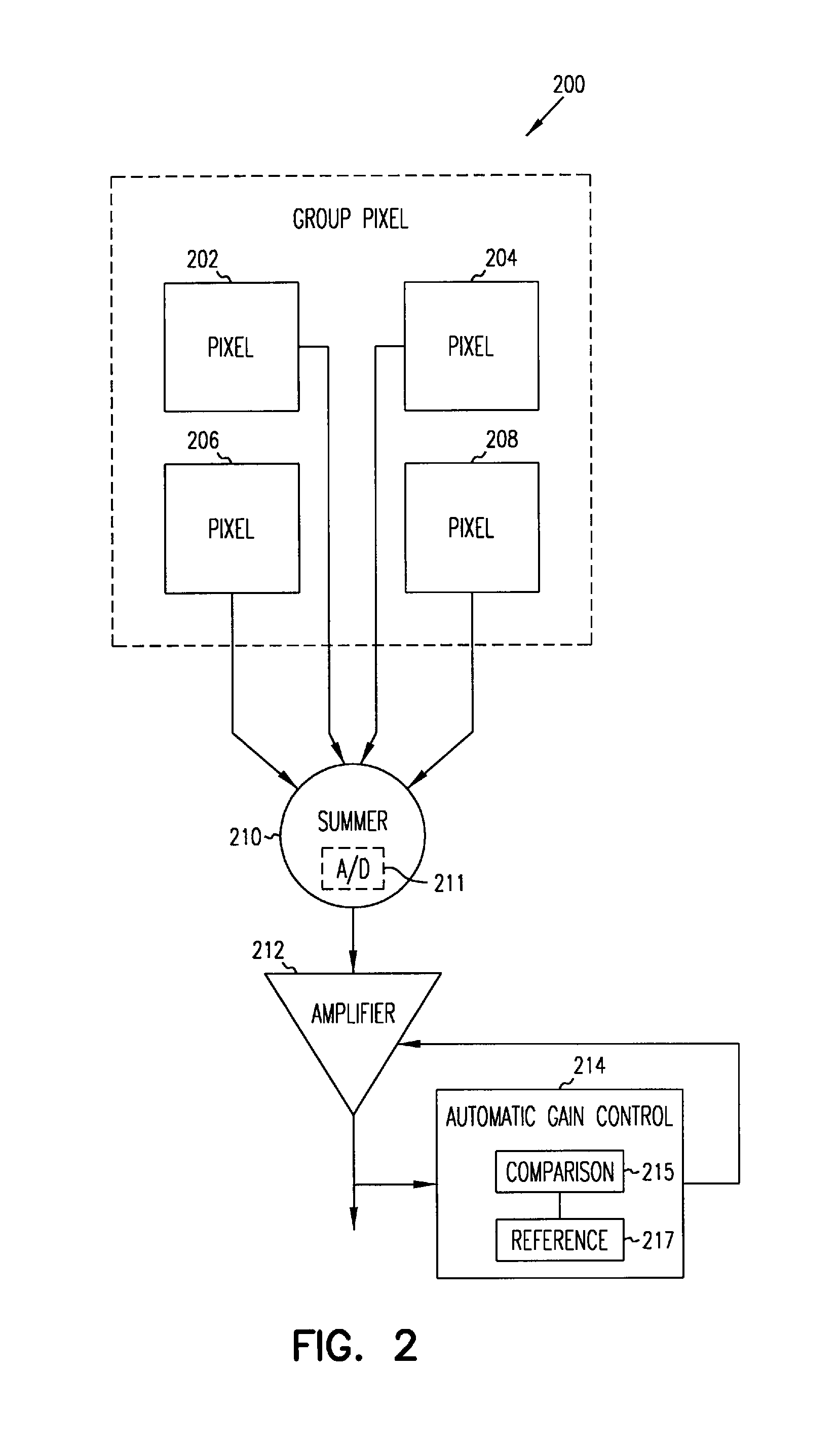Redundant imaging systems
a technology of imaging system and image, applied in the field of image array and method, can solve the problems of deformation of the image, and affecting the quality of the result, and achieve the effect of reducing the quality of the resul
- Summary
- Abstract
- Description
- Claims
- Application Information
AI Technical Summary
Benefits of technology
Problems solved by technology
Method used
Image
Examples
Embodiment Construction
[0013]The following detailed description, which references and incorporates FIGS. 1–3, describes and illustrates one or more specific embodiments of the invention. These embodiments, offered not to limit but only to exemplify and teach, are shown and described in sufficient detail to enable those skilled in the art to implement or practice the invention. Thus, where appropriate to avoid obscuring the invention, the description may omit certain information known to those of skill in the art.
[0014]FIG. 1 shows an exemplary imaging array 100 incorporating teachings of the present invention. Imaging array 100 includes group pixels 110, 112, 114, and 116, an address line 120, a drain line 130, a reset line 140, and a signal line 150. for controlling the group pixels. (For clarity, the figure omits conventional features, such as row-select logic, column-select logic, timing-and-control circuitry, and analog-to-digital converters.) In the exemplary embodiment, array 100 includes four group...
PUM
 Login to View More
Login to View More Abstract
Description
Claims
Application Information
 Login to View More
Login to View More - R&D
- Intellectual Property
- Life Sciences
- Materials
- Tech Scout
- Unparalleled Data Quality
- Higher Quality Content
- 60% Fewer Hallucinations
Browse by: Latest US Patents, China's latest patents, Technical Efficacy Thesaurus, Application Domain, Technology Topic, Popular Technical Reports.
© 2025 PatSnap. All rights reserved.Legal|Privacy policy|Modern Slavery Act Transparency Statement|Sitemap|About US| Contact US: help@patsnap.com



